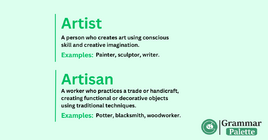John, I have been an artist my entire life. No one can tell me what art is or is not. For me, it is whatever I say it is.
I seek what it can be with no limitations.
Allow me to ask a simple question… do you need or want some professor of music to tell you what music is or is not? Do you want or need a professor of cinema to tell you what is a good movie? Does anyone have an emotional religious experience standing over a stack of cement blocks in the middle of a museum floor?
So far, my count for this silliness is five. Does anyone think the photo “Piss Christ” is any more than cheap shock art? Does looking at a $150k banana taped to the wall bring tears to your eyes? Does anyone think good craftsmanship is a detriment to good art work? CalArt teaches that.
A valid emotional response is to throw up all over such baloney. These same generic art professors threw Norman Rockwell under the bus. It is at the point now that if anything is outrageous, pointless, craftless, or tasteless, it is art and nothing else is. If one speaks out, they are considered artistically challenged. Har, har, har.
All of it is art. In my estimation, crap art. But still, art.
All of the things you refer to require skill to be accepted. Julliard looks for skill, then teaches nuance…art.
I have actually played a one string tub bass. It doesn’t work well even in a garage band.

Self taught Chet Atkins did an album with the Boston P. Orchestra. Never say never.
I used to fly aerobatics in a powerful Pitts biplane in competition. All skill, no art just like car racing.
Make your art your way and enjoy the heck out of it. You can do anything you are willing to pay the price getting you skills up to par. Do not accept the limitations imposed gleefully by others.
By the way, if your physician does not like you educating yourself about what he is doing to you, friend or not, get a second opinion.


